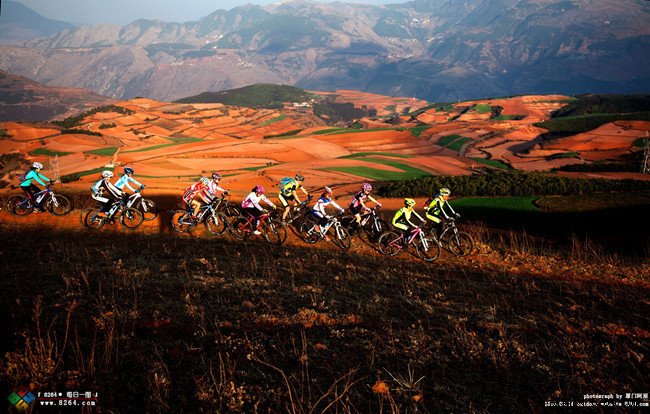The maximum amount of oxygen your body can consume - VO2max is very important to the cyclist's performance, especially when you need to ride faster/further. Because the more effective oxygen you can inhale, you can maintain aerobic conditions longer, you can ride faster and further, and less likely to fatigue. There are many factors that determine VO2max: the alveolar surface area, heart-to-pore output, blood volume, skeletal muscle capillary density, and mitochondrial density, among which the lung is the most important component. Take a look at the changes in the lungs while riding.

Lung inflation
When you inhale, the lungs swell like a bladder filled with water. The main task of the alveoli is to inhale oxygen-enriched air and remove the carbon dioxide produced by cellular metabolism. The process of gas exchange occurs on the surface of the alveoli, and the grape-like alveoli can increase the contact area and use oxygen more effectively. The hypoxic blood passes through the lungs, expels carbon dioxide, and absorbs fresh oxygen; then the oxygen-enriched blood is pumped through the heart into the muscles.
2. The lung surface is fully utilized
When riding a bike, especially in a tough race like a time trial, the mitochondria in your muscles need more oxygen. With high-intensity stimulation, your heart rate will increase, and your blood output will also increase - the blood flow through the alveoli will increase; in addition, the breathing speed, depth of respiration, alveolar volume and surface area will increase. In this way, you have a higher oxygen exchange efficiency.
3. The abdominal muscles start working
Taking a deep breath will enlarge your alveoli, but this comes at a price and you will consume more energy. It's like pumping tires. When you get more and more gas, you need more and more energy. In order to assist this process, your body will use more breathing muscles. The first thing that comes in your stomach is your abdominal muscles, which can help you breathe more air.
4. Diaphragm helps the body inhale more air
When you exhale, the lungs slowly become smaller, like a balloon that leaks. In order to expel more gas, leaving enough room for the lungs to breathe in oxygen-enriched air, the body uses extra breathing muscles to help exhale. This process is done by intercostal muscles and diaphragms. Diaphragm is a thin umbrella muscle that is below your lungs.
5. Inhale more particles
When the oxygen demand increases, the body's breathing pattern shifts from nose breathing to mouth-based breathing. The nose has the function of filtering dust and foreign matter. It can also heat and moisten the air. When there is no such filter, your mouth will inhale a lot of foreign particles. So when riding in the drylands, some mountain bikers wear a "mask" on their mouths to prevent too much dust from entering the respiratory tract.
6. Spit more mucus
After hard training, people sometimes cough uncontrollably. This may be exercise-related asthma, but it is more likely that the lungs are undergoing self-cleansing.
After strenuous exercise, foreign objects that have not been expelled from the trachea will be discharged slowly when you rest. When dusty mucus comes into your trachea, stimulate your body to start coughing and then spit out mucus. When you inhale more, the more you need to spit.
7. Breathing muscles will be enhanced
High-intensity training will make your breathing muscles stronger. It was shown in the study that the 12-week high-intensity interval training program will make a significant change in the body, and there will be some enhancement in the abdominal respiratory muscles and diaphragm. If you want more obvious improvement, you can train these muscles according to your actual situation. Research shows that training against respiratory muscles can improve your endurance level. (Content from Mida.com)
Pet Products,Elevated Dog Bowls,Cat Feeder,Automatic Cat Food Dispenser
Green Source(Guangzhou) Co. Ltd. , https://www.stargalaxycn.com